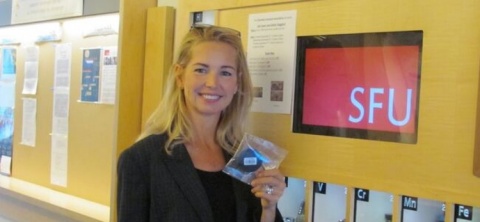November 7th, 2020

The leading cause of lung cancer after smoking, radon leads to ~16% of lung cancer deaths in Canada. November is Radon Action Month.
What is radon? Radon is a radioactive gas that occurs when uranium in soil and rock breaks down. You can’t see it, smell it, or taste it. When released from the ground into the outdoor air, radon is diluted and not a health concern. However, radon can enter a home through small cracks and openings where the house contacts the soil. Because radon is heavier than air, it can over time accumulate to high levels, putting people’s health at risk. Radon is measured in Becquerels (Bq). Canada’s Radon Guideline is 200 Bq/m3. If your home has between 200 and 600 Bq/m3, Health Canada advises that you address the problem within 2 years. If your home has over 600 Bq/m3, Health Canada advises you address the problem within 1 year.
How serious is the risk of exposure? Radon gas will release radioactive alpha particles. When the gas is inhaled, alpha particles bombard lung tissue, damaging lung cells. Scientists estimate that with a lifetime exposure to 800 Bq/m3, 1 in 20 people will die of lung cancer. For smokers, living in a home with high radon levels increases their chance of being diagnosed with lung cancer even further. When smokers are exposed to a lifetime average of 800 Bq/m³ of radon, 1 in 3 will die of lung cancer. We are most worried about radon in homes, because that is where people spend most of their time, but high radon can also be a problem in workplaces, schools, daycares, and any indoor places you visit.
How can I find out if I have a radon problem and what can I do about it? The only way to know if your building has a problem is to test. Health Canada recommends a 91 day test using an “alpha tracker”—a small and inexpensive testing device that is easy to use. It measures radioactive particles emitted by radon. After 91 days, the device is sent to a lab for analysis, which tells you the average radon concentrations measured. For larger buildings, professional testing is recommended, using radon testing professionals certified by the Canadian National Radon Proficiency Program.
For the month of November, we can sell you a radon test kit for $25. Purchase yours by calling the BC Lung Association at 1.800.665.5864 or send us an email at radonaware@bclung.ca. Note, this promo is not valid for purchases made via the webstore. Alternatively, radon test devices are available from some online retailers and hardware stores.
Do a lot of BC homes have radon problems? Radon gas occurs naturally and is found across Canada but concentrations vary. Levels are usually higher in areas where there is a larger amount of uranium in underlying rock and soil. Radon levels can also even vary from one building to another. Health Canada has recently created a Radon Map for Canada which can help you know how common elevated radon is in your community.
Still have questions? Consider attending our Annual Radon Event (a webinar this year) on November 30, 2020. Register free here.
(Photo: Dr. Anne-Marie Nicol, Scientific Advisor, Healthy Indoor Environments Program)
